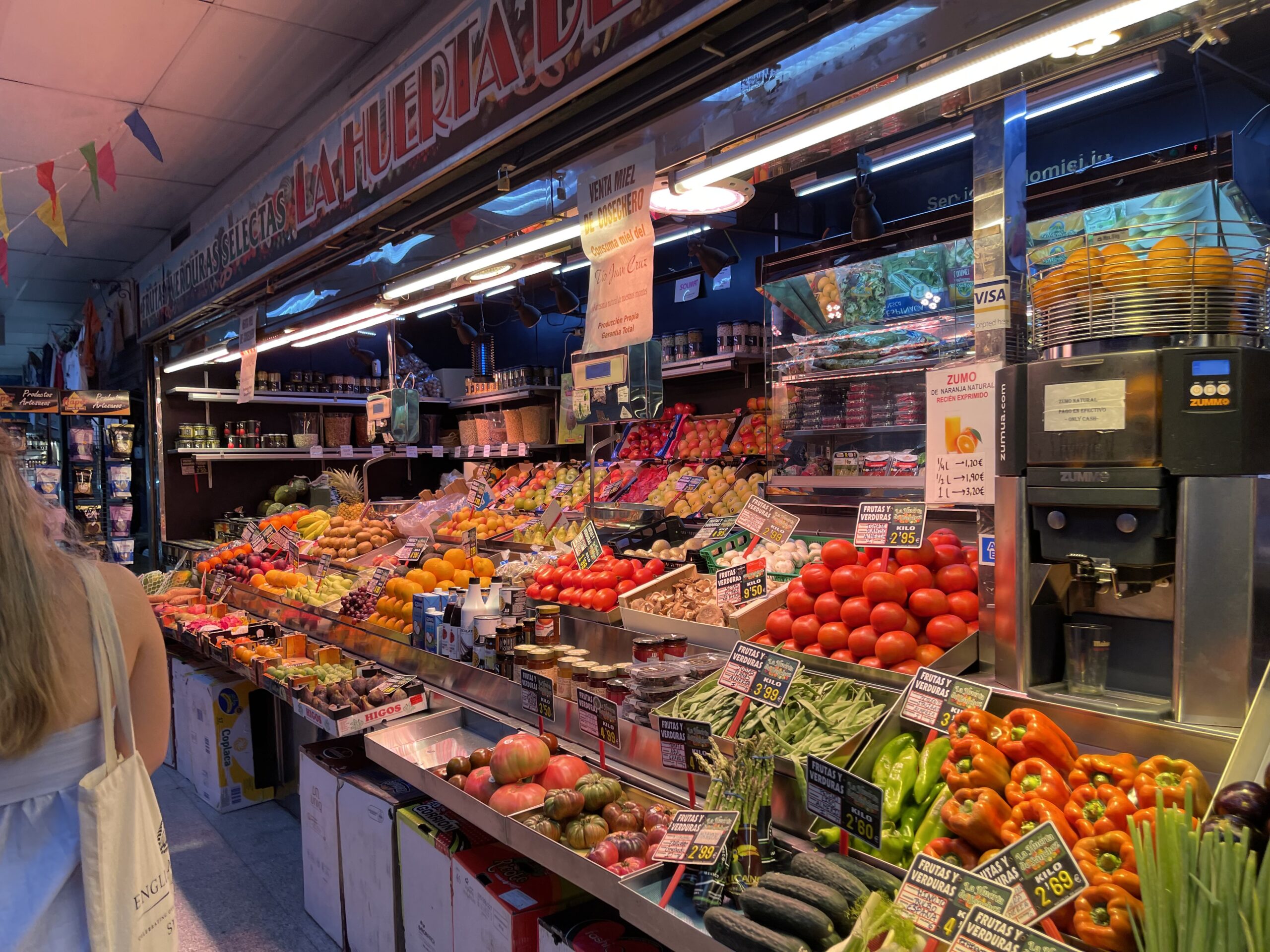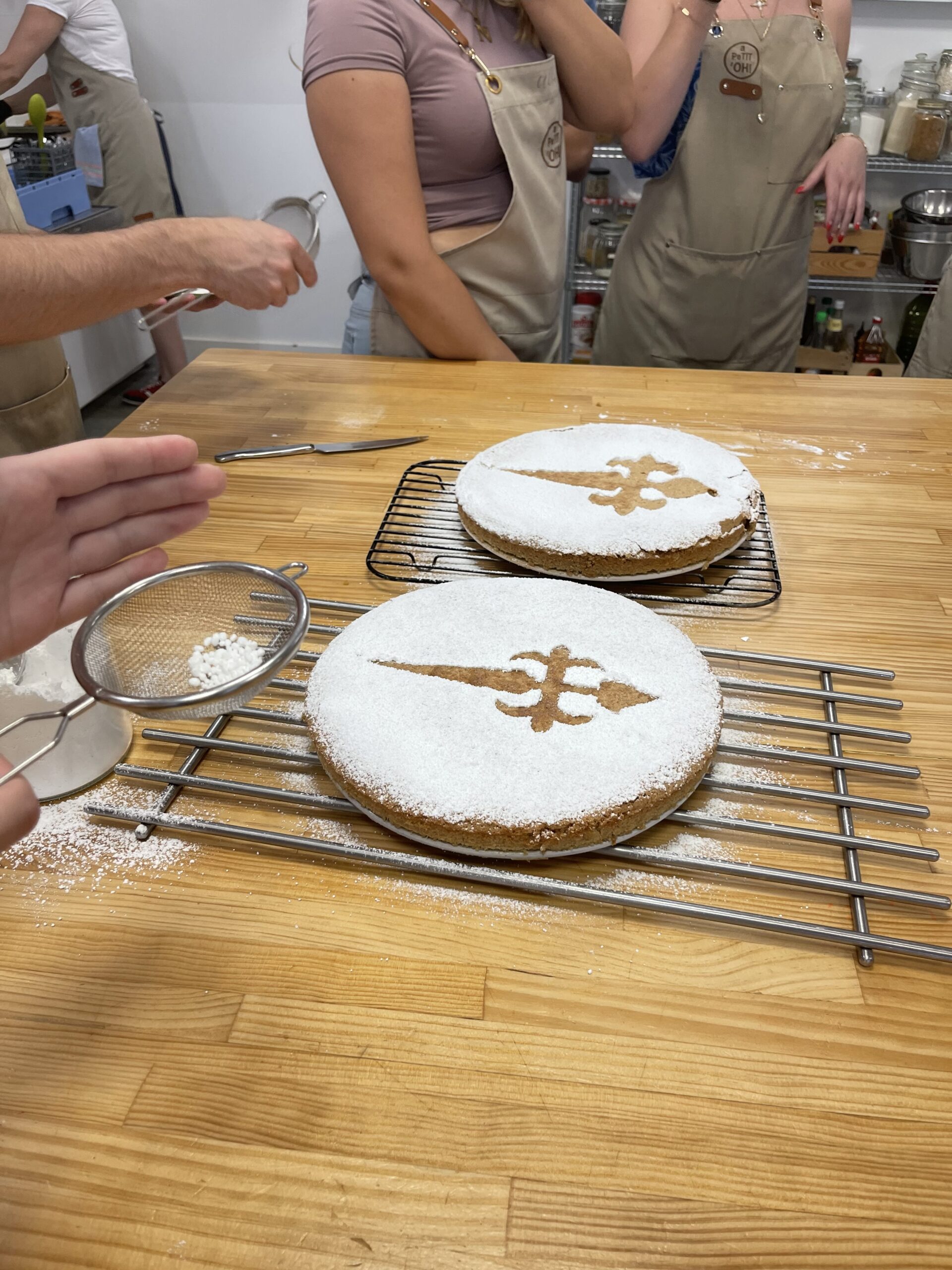Written By: Trevor Johnson ’26 (Session 2)
Spain is a country filled with a truly diverse culture. From tapas to tartas, the gastronomy of Madrid alone entertains enough dishes to have you eating something new and never before seen–every night! It was exciting to be able to go to the Antón Martín Market, filled with shops selling fresh fruit, fish, and all other kinds of delicious Spanish food! What was especially interesting to see was a stall selling olives cooked in all types of ways! The most common (and cheapest) form of Spanish markets is called an alimentacion, which directly translates to mean “nourishment,” or “nutrition.” One distinct difference between shops in the United States and those of Spain is that Spanish shops tell you exactly what they sell, then tell you the name. For example, an ice cream shop (such as Ben & Jerry’s) in the U.S. will simply show its name. It is up to the customer to either know the product or further investigate the store. In Spain, however, an ice cream shop will say heladería, a shoe shop zapatería, a fish shop pescadería, etc. These names directly and deliberately tell the customer exactly what the product is. Another difference between American and Spanish markets is this: oftentimes, Americans tend to go to a large supermarket, as opposed to a small market. This “supermarket” archetype is also present in Spain, however, from what I have experienced, aside from El Corte Inglés the most prominent form of buying food is by cultivated friendships from streetside markets. As a result, instead of chain grocery stores and mass-produced food, small markets sell fresh food, some bringing in their produce same-day! All this is not to knock Spanish supermarkets, however. The idea of an American supermarket must be put to the side when describing a Spanish one. Although the layout may be similar, the food and the regulation of it differ. As a result of this, the name supermercado does not carry the same weight as its english counterpart: “supermarket.”

The Spanish Agency for Food Safety and Nutrition (AESAN) is the Spanish counterpart to the FDA, with its headquarters located in Madrid. This agency regulates the sale of food in Spain, and, according to 2013 obesity rates, they’re doing a good job. Compared to the U.S.’ whopping 42.8%, only 18% of men and 16% of women were considered obese in Spain. This is, of course, partly due to the regulation of food by AESAN, but also due to the culture surrounding food in Spain.
When it comes to fast food, the U.S. can hardly be beat. With a McDonald’s or Dunkin Donuts around every corner, there is no shortage of “quick bites.” In contrast, Madrid (the second biggest city in the European Union) has only 105 McDonald’s covering its 233.3 mi2, almost 20% of all McDonald’s in Spain. To put this in perspective, New York City has over 250 golden arches across its 302.6mi2, with 74 locations in Manhattan alone! The culture of fast food is by far an American one, and the lack of said culture contributes heavily to not only the consumerism tendencies of Spaniards, but also their health.
Because Professor Iso was feeling under the weather, Professor Lokos brought the group to Apetit’Oh!, a restaurant in downtown Madrid that specializes in cooking classes. The group had an eventful night cooking a Mixed Paella as the main course, Spanish Tortilla for the appetizer, and Santiago Cake as the dessert course. It was a fun and eventful experience for the entire group, although a few students could not eat the courses due to allergies. Nonetheless, Professor Lokos fearlessly declared the meal to be the best one cooked by students thus far. All in all, the evening was quite a bonding experience, and will not soon be forgotten by any of the chefs involved!



